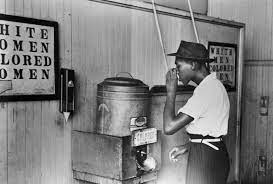After the Emancipation Proclamation in 1863, the Reconstruction period came with laws that infringed the lives of the newly freed slaves. Social influences like Black Codes in 1865, along with racist hate groups and the emergence of Jim Crow in 1877 left little to no room for an emotional trauma break. This resulted in the blues being a way to communicate feelings among the black community as well as a coping mechanism for their daily life experiences. They had their own music, speaking of their experiences and desires for the future. The same tools used previously, such as African drums and rhythms, field hollers, and spirituals, were the roots of the blues as it expanded. These tools were accompanied by instruments such as the double bass, saxophone, and brass instruments, which could embody the lyrics’ emotions. Additionally, instrumental artists like John Coltrane were also able to encapsulate emotions in their compositions.



